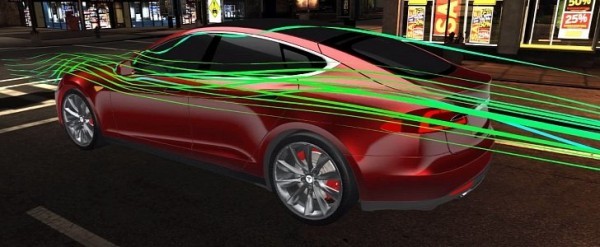
A drag coefficient is a number used in fluid dynamics to determine the resistance encountered by an object moving through a fluid. In real life, all fluids have a tendency of resisting object passing through them with a force which acts opposite to the relative motion of the respective object.
For cars, the drag is the force with which the surrounding air pushes against the car as the vehicle travels as if trying to stop it or slow it down.
For an automobile, that means a car moving down a road would be opposed by the air which it travels through with a force that is dependent on the design of the car and the speed it travels at – drag increases with the square of speed.
Because of this, the effects of drag are mostly felt at higher speeds, meaning cars have to be designed in such a way that they reduce the drag coefficient as much as possible.
But a higher drag coefficient also impacts more than the performance of a car at high speeds. The higher the number, the more difficult the car to control, the more fuel it uses, the more acceleration is affected.
Calculating the drag coefficient involves a complicated math formula that takes into account speed, density of the air, and the reference area, meaning the surface of the car. The layout of the wind tunnels where the cars are tested could also affect the drag coefficient.
Design-wise, one of the components that affect the drag coefficient is the front end of a vehicle.
Reducing drag too much when designing a car could lead to an undesired effect: too much lift, which in turn could lead to the vehicle’s traction being affected. CARS
Generally, a production car has a drag coefficient of between 0.25 and 0.3, while SUVs have a higher figure because of their boxier shapes, between 0.35 and 0.45.
Somewhat contra-intuitive, the drag coefficient of high-performance cars like the ones used in Formula 1, or the production Caterham Seven, is far worse than that of say the cube-on-wheels Hummer H2.
The Formula 1 cars come in at between 0.7 to 1.1, depending on the settings chose by teams for each of the circuits the cars race on. By comparison, the Hummer H2 has a drag coefficient of around 0.57.
The reason behind this is the fact that Formula 1 cars need drag so that they can generate enough downforce for high-speed cornering. As we said earlier, a low drag could mean more lift, hence more drag means more downforce.
Important to note is the fact that the drag coefficient is a highly volatile figure. When this figure is determined for a certain car, it only refers to that particular car, in that particular configuration, and not the entire model line.
For instance, the most aerodynamic production car currently available on the market is the Mercedes-Benz CLA 180 BlueEfficiency, with a drag coefficient of 0.22. That figure is not valid for all CLA models, but only for this particular version, equipped with the stock body kit. Any modification, like say a new bumper, changes the figure.
Today, the top five cars with the lowest drag coefficient start with the mentioned Merc and continue with the 2017 BMW 520d EfficientDynamics (also 0.22), Tesla Model 3 (0.23), Alfa Romeo Giulia Advanced Efficiency (0.23) and Audi A4 2.0 TDI ultra (0.23).








